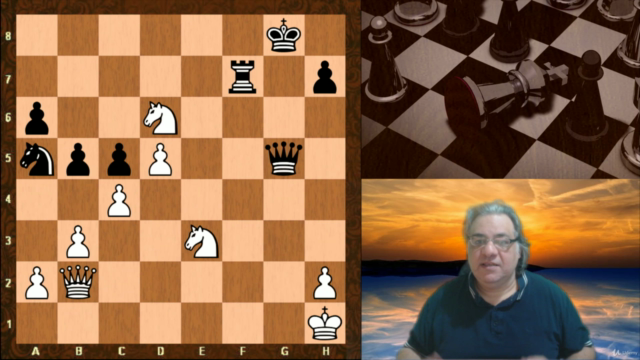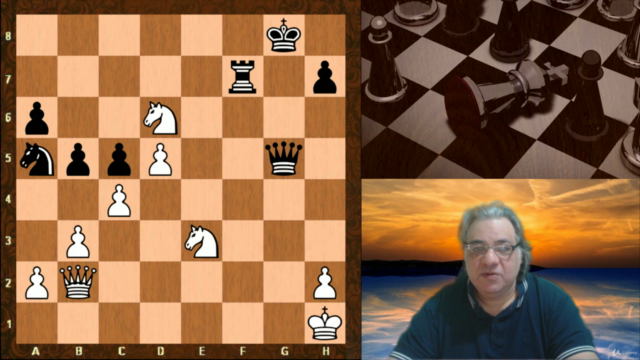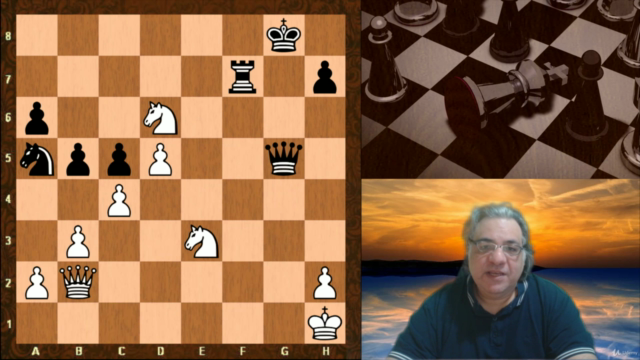The Complete Guide to Chess Tactics
Learn Chess Tactics, Calculation and Pattern recognition skills that enable you to create beautiful winning combinations
4.64 (1478 reviews)

13,029
students
21.5 hours
content
Jan 2025
last update
$99.99
regular price
What you will learn
Be able to use a fundamental understanding of chess tactics and combinations to sky-rocket your results and rating
Be able to make sure opportunities are not missed in Calculation using Weakness of last move, Common squares, and "In-Effect"
Be able to make use of the important tactical motifs like Fork, Deflection, Decoy, Pins, Discovered Checks, and many more etc
Be able to get a feel for downsides of opponents position which could imply a combination exists
Be able to use chess combinations to often win by force from positions where no issues visually seem present
Be able to know the philosophies of great tactical examples explained in depth and re-use them in your own games
Be able to use inspirational calculation aids such as "The power of the pinned piece is illusionary" and "Combine and win"
Be able to understand the importance of the prioritisation of forcing moves when calculating to limit the opponent's replies
Be able to appreciate the examples of combinations from the World chess champions
Be able to exploit the default downside often of the Weak Back Rank
Be able to exploit your passed pawn potential through tactical means
Be able to exploit loose piece liabilities of the opponent
Be able to exploit King safety issues of the opponent
Be able to detect tactical issues and "celebrate" them using the concept word of "down-sides" throughout the examples
Be able to understand the Fundamentals of Chess Tactics - Forcing moves, checks, captures, threats of mate and limiting opponent options in general
Be able to match appropriate combinations with the downsides of the opponents position
Be able to maximise the differential imposed between strengths of your position and opponent weaknesses
Be able to play brilliant and beautiful chess combinations - but be warned you may lose sleep over them
Be able to detect if combinations exist using various approaches of detection and examples
Be able to finish off opponents quickly and get a new game in the all-you-can eat online tournaments
Be able to play with very high accuracy sharp combinations
Be able to recognise all the key mating patterns that have been established through Chess History
Be able to practice with multiple examples all key tactical instruments which are part of combinations
Screenshots




Related Topics
3553549
udemy ID
10/7/2020
course created date
10/26/2020
course indexed date
Bot
course submited by